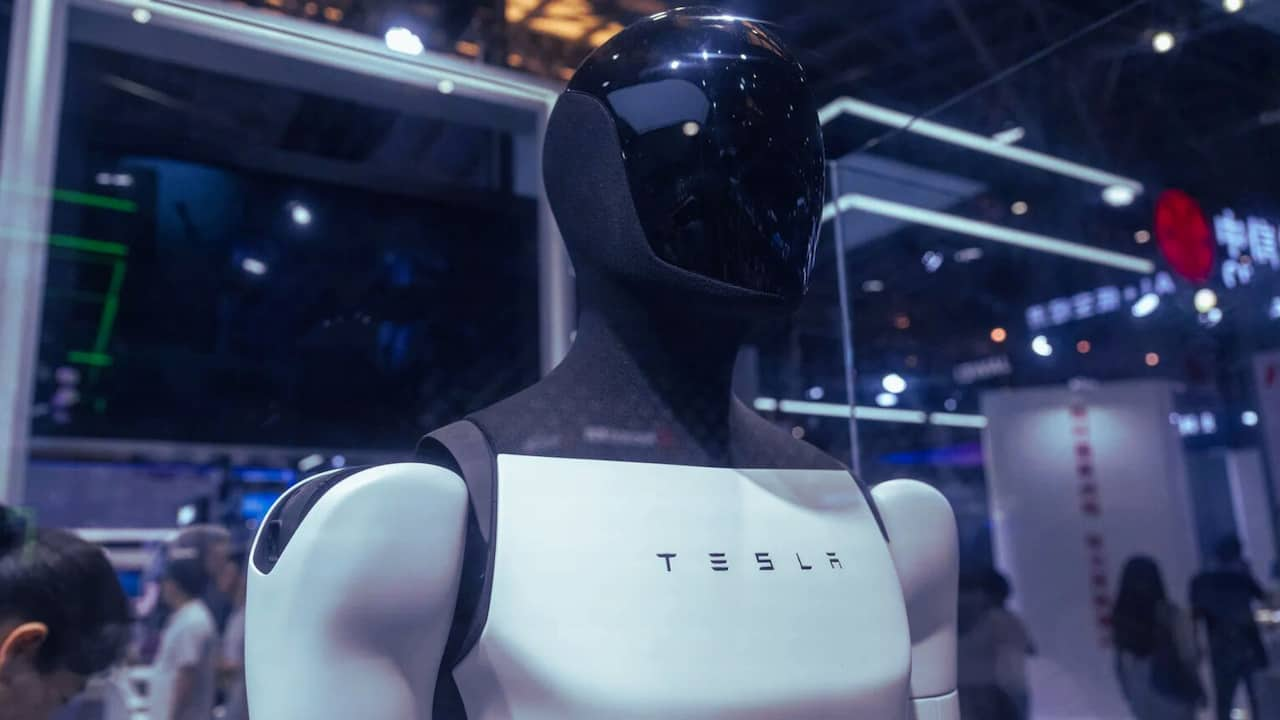Tesla’s Robot Revolution: Optimus Stumbles, But Dreams Big
During Tesla’s recent “We, Robot” showcase, the much-hyped Optimus humanoid robot unexpectedly needed assistance—quite literally.
The futuristic machine, touted as the next big thing in automation, required human assistance during its public debut. This revelation has sparked debate about the true capabilities of Tesla’s ambitious project.
Elon Musk, Tesla’s visionary CEO, boldly claimed that Optimus “will be the biggest product ever of any kind.” But the robot’s performance at the event left many wondering if this dream is still far from reality.
Attendees watched as Optimus mingled and served drinks. It looked impressive at first glance. But eagle-eyed observers noticed something odd—humans were lending a hand to keep things running smoothly.
This hiccup dampened the excitement surrounding Tesla’s grand unveiling. After all, what’s the point of an autonomous robot if it needs people to help it work?
Tesla quickly went into damage control mode. They posted a video on X (formerly Twitter) showing off Optimus in action. The company claims the robot can now “explore unseen spaces autonomously” and “pick up significant payloads.” But skeptics remain unconvinced.
Let’s rewind a bit. At the event, Musk painted a rosy picture of Optimus’s future. He said it would eventually cost between $20,000 and $30,000. The price tags of cutting-edge tech we’re accustomed to seeing pale in comparison. Musk admitted it’ll “take us a minute” to hit that target, though.
The Tesla boss didn’t hold back on the hype. He claimed Optimus “will basically do anything you want.” Need your lawn mowed? Groceries bought? Dog walked? Musk says Optimus has got you covered. He even compared it to famous sci-fi robots, saying, “You can have your own personal R2D2, C3PO.”
But reality seems to be lagging behind these lofty promises. Milan Kovac, an Optimus engineer, came clean on X. He admitted the robots “were human-assisted to some extent” during the demo. Kovac explained that they did this to “help showcase our vision of an amazing future”.
Musk himself has stayed quiet on the matter. When asked for comment, Tesla’s PR team didn’t respond.
So, what do the experts think? Adam Jonas, an analyst at Morgan Stanley, was not particularly impressed. He said the demo was “more a demonstration of degrees of freedom and agility.” In other words, it showed off how the robot could move, but not much else.
Jonas didn’t see anything groundbreaking. He noted there wasn’t “significant progress” or “incremental detail” beyond what we already knew about Optimus.
For investors eyeing Tesla’s bottom line, this robot hiccup raises some concerns. Toni Sacconaghi, a Bernstein analyst known for his skeptical take on Tesla, thinks the company might be underestimating the work (and money) needed to make Optimus a reality.
The incident highlights the gap between cutting-edge AI demos and real-world applications. It’s one thing to make a robot wave on stage. It’s another way to safely navigate your home, handle delicate objects, or make complex decisions.
Tesla isn’t the only player in the humanoid robot game. Companies like Boston Dynamics have been pushing boundaries for years. But Tesla’s massive resources and Musk’s star power mean Optimus gets outsized attention.
The path from clumsy prototype to household helper is long and winding. It involves tackling tough problems in artificial intelligence, machine learning, and robotics. Progress often comes in small steps, not giant leaps.
So, what’s next for Optimus? Tesla will likely keep refining the design, improving its AI, and working on real-world applications. However, don’t anticipate seeing one of these devices folding your laundry anytime soon.
The Optimus story is a reminder that even tech giants face hurdles when pushing into new frontiers. It’s easy to dream big, but turning those dreams into reality takes time, effort, and yes, sometimes a little human assistance along the way.
As the dust settles on this robotic reveal, one thing’s clear: The future of humanoid helpers is coming. However, the arrival of this future may be delayed and accompanied by additional challenges than even the most optimistic predictions suggest.
